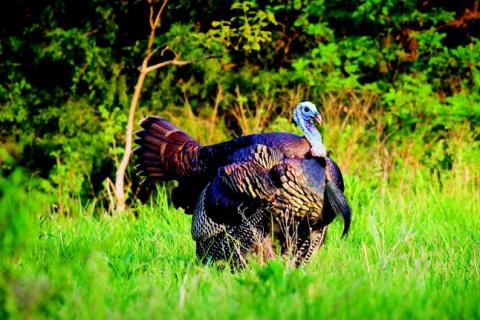
First of all, please understand, the words "always" and "never" do not apply to wild turkeys.
 |
| Shop for spring turkey hunting gear at basspro.com |
I've assembled some of my turkey hunting tips and strategies for locating spring turkeys during hunting season. These tactics will help new hunters get started and be a refresher for the experienced hunters.
Remember, to be a good turkey hunter, you must be a good listener to locate and start your hunt.
1. Turkeys are usually more vocal on the roost...Morning and evening.
2. Late evening, dusk, is fly-up time for both hens and gobblers.
3. Hens often cackle, when flying up to their roost in a tree.
4. The cackle is a burst of of short, staccato, single notes that are usually associated with turkey movement...flying up or down.
5. Gobblers many times will gobble in response to that cackle of the hen.
6. The hunter can imitate that cackle on a box, slate, or mouth turkey call, which in turn allows the hunter to know the location of the gobbler and where he can begin his hunt the next morning.
7. If the cackle doesn't bring a response from the gobbler, a sudden, burst on an owl hooter, crow call, or coyote call can often bring the response from the gobbler.
8. If no response can be drawn from the roosted gobbler at dusk, repeat the same in the gray light (30 min before daylight) of early morning.
9. Occasionally, toms may not gobble at all, and then the hunter must use his ears even more carefully, to listen for the wing-beats or flap of turkeys flying down. Sometimes, that is the only clue to the location of the birds.
10. Turkeys make more noise flying up than down.
- 38291 views

